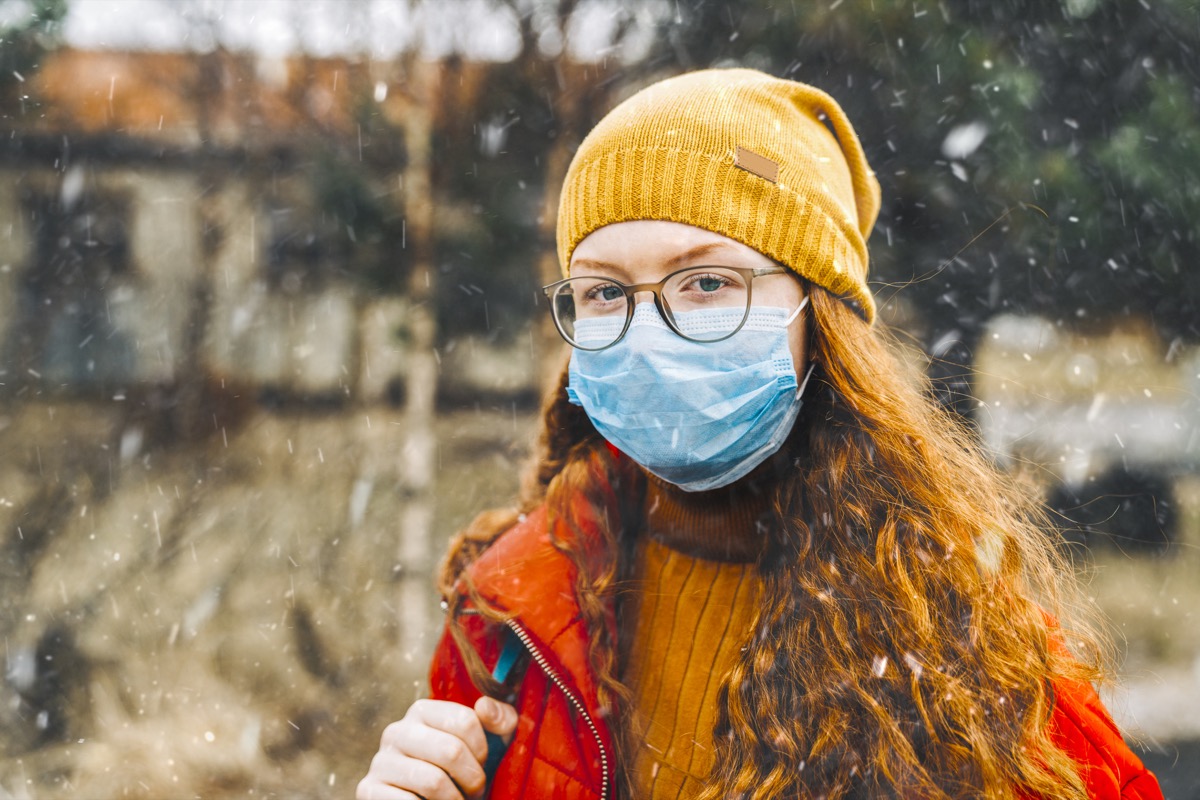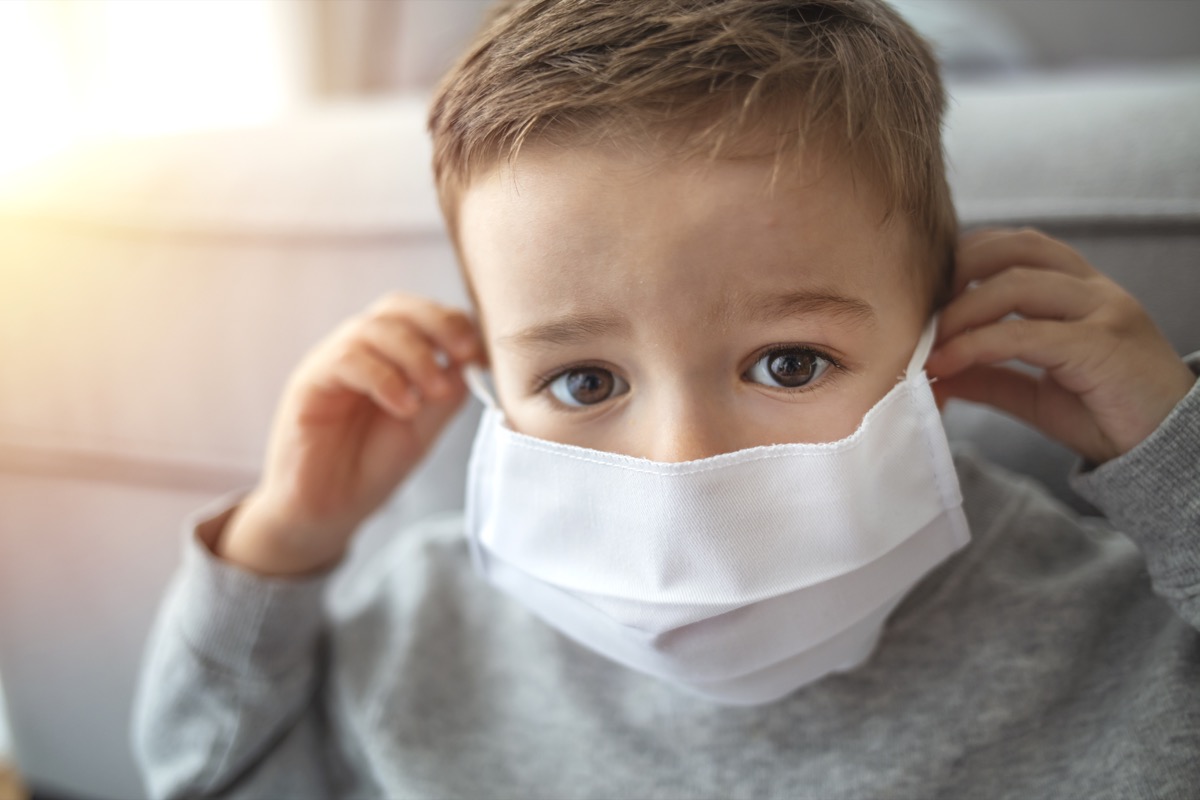The findings, which were published in the agency’s Morbidity and Mortality Weekly Report (MMWR) on Jan. 13, show an unmistakable shift in the age groups that have been affected by the virus recently. “COVID-19 cases in children, adolescents, and young adults have increased since summer 2020, with weekly incidence higher in each successively increasing age group,” the study states. Read on to see what the agency is recommending as a result, and for more on how to stay safe, check out Doing This to Your Mask Could Keep You Even Safer From COVID, Experts Say. Read the original article on Best Life. After examining data between Mar. 1 and Dec. 12 of 2020, the CDC study found that 2,871,828 laboratory-confirmed cases of COVID-19 had been reported in children and young adults aged 24 years old and younger. The findings also showed that 57.4 percent of cases were reported in young adults between the ages of 18 and 24, with cases dropping off significantly among the younger age groups. The study also reported that the older age group may be playing more of a part in the current surges. The researchers suggest that “young adults might contribute more to community transmission than do younger children.” And for more on how to stop the spread of COVID, check out These 3 Things Could Prevent Almost All COVID Cases, Study Finds. Still, data showed that the number of young people and children affected by the virus is increasing. “Among children, adolescents, and young adults, weekly incidence (cases per 100,000 persons) increased with age and was highest during the final week of the review period (the week of December 6) among all age groups,” the study stated.ae0fcc31ae342fd3a1346ebb1f342fcb Of course, this is also when the U.S. started to see cases on a whole climb, with The New York Times noting the increase in cases is “paralleling the virus’s trajectory among older adults in the U.S. population.” And for more regular COVID updates, sign up for our daily newsletter. The findings of the study are likely to reopen the debate of whether or not it is safe to reopen schools for in-person learning. The study’s authors recommend that given the increase in volume of cases, “communities and schools should fully implement and strictly adhere to recommended mitigation strategies, especially universal and proper masking, to reduce COVID-19 incidence.” The authors also note that when community transmission rates are low and mitigation measures are followed, child-care facilities and elementary schools can operate safely. “We’re recommending that child-care centers and schools, especially elementary schools, be the last settings to close after all other mitigation measures are deployed, and the first to reopen,” Erin K. Sauber-Schatz, an epidemiologist at the CDC, told The New York Times. Other studies have found that closing classrooms does have an effect on community transmission. Researchers at the Swiss Federal Institute of Technology in Zurich found that closing schools throughout Switzerland cut transmission rates by 21.6 percent, placing it third behind banning gatherings (about 25 percent) and closing bars and restaurants (22.3 percent) as effective ways to stop the spread, CNBC reports. And for more on how to keep yourself safe, check out Wearing This Mask Could Be Worse Than No Mask at All, Study Says. Another study of children, teens, and young adults—out of the University of Minnesota published in the journal JAMA Pediatrics on Jan. 11—found that hospitalizations among children is nearly nine times higher than it was in the spring. The researchers examined data on 5,364 patients 19 years old and younger who were hospitalized across 22 states between May and Nov. 2020. In May, there were 2 hospitalized children per every 100,000 on average; in November, that number rose to 17.2 hospitalizations per 100,000 children. “This demonstrates that COVID still has the potential to cause serious illness in children,” study author Pinar Karaca-Mandic, PhD, told The New York Times. “It’s not like children are immune. It’s not like children are not at risk.” Still, other recent developments in the pandemic may have an effect on the spread among the younger population. An unrelated study out of Imperial College London, which has not yet been peer-reviewed, used public health data to compare how reported cases have been affected by the spread of the newly discovered, highly contagious U.K. variant. The findings upheld previous theories that the new strain is both more transmissible and that younger members of the population were more likely to become infected. The authors wrote that there was a clear “shift in the age composition of reported cases, with a larger share of under 20-year-olds among reported [Variant of Concern] VOC than non-VOC cases.” The study confirms the theory previously put forth by health officials that the new variant was showing signs of infecting a formerly less-affected group. “There is a hint that it has a higher propensity to infect children,” Neil Ferguson, PhD, a scientist at Imperial College and one of the study’s authors, previously told reporters in late December. “What we’ve seen over the course of a five- or six-week period … [is that] the variant in under-15s was statistically significantly higher than the non-variant virus.” And for the latest on the spread of the new variant, check out The New COVID Strain Is Now in These 12 States.




